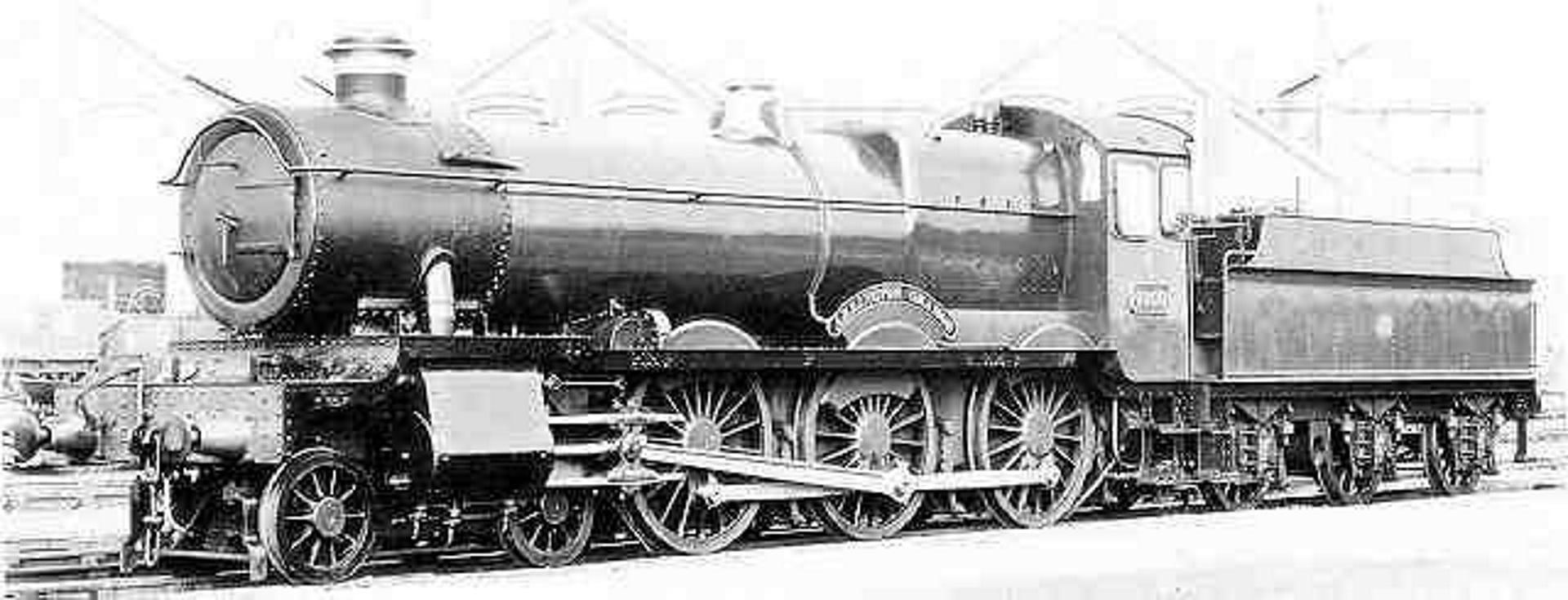If you looked at the bottom of Last weeks Project Information, you would know this week is about a new build project of a Great Western Railway (GWR) design, the Granges. As always, we will relive the story of the Granges, look at the Aims of The 6880 Society (6880 Betton Grange) and their Progress up-to-date with the 81st Grange.
Background
Although the Granges first appeared in August 1936, the design dated back to Churchward’s time as Chief Mechanical Engineer (CME) of the GWR. In Churchward’s 1901 Plan, he drew up a locomotive featuring 5ft 8in Driving Wheels, and with what later became known as Swindon’s Standard No. 1 Boiler. At the time, the plans were shelved. When attention in the Drawing Office turned to a Mixed Traffic design, the 43XX class with 2-6-0 wheel arrangement was designed and built, following experience H.Holcroft had gained on a trip to America.

By the mid-1930s, the need for a new locomotive design, more powerful than the 43XXs, was great. With the oldest 43XXs also requiring major renewal work soon, Collett (who succeeded Churchward as CME of the GWR) decided to rebuild some of the 43XXs into the new 68XXs, named after Granges. He took Churchward’s design from 1901, updated the design with modern Cab and Cab fittings, with only minor changes to the technical details.
The new 68XXs used parts from the 43XXs they were from built from, namely the Wheels, Valve Motion, and Tenders. Despite the Cylinders being the same size on both Classes, due to the 5ft 8in Driving Wheels on the Hall Chassis, a new layout for the Cylinder Block had to be used. 80 Granges had to be built by May 1939. More would have been built if it wasn’t for the outbreak of War World 2.
Performance and Decline

The Granges put in very good performances hauling the Mixed Traffic duties they were built for, from Fast Goods containing perishable to heavily loaded Summer Excursion trains. They were used all over the system, generally being popular with Footplate Crews. Essentially, they were a smaller wheeled version of the Halls, which meant they had slightly higher Tractive Effort. Also common with the Halls was their Route Availability. Red, meaning they couldn’t travel over as much of the GWR system as the 43XXs could. Most notably, they couldn’t travel over the Cambrian network. This was resolved by the induction of the Manor class.
Like other former Great Western engines, the Granges couldn’t escape withdrawal and scrapping. Withdrawal started with No. 6801 “Aylburton Grange” in October 1960, with 6872 “Crawley Grange” being the last engine withdrawn in December 1965. Unfortunately, none were preserved.
The Aims of The 6880 Society
Set up in 1998, The 6880 Society’s main aim is to rebuild a GWR Grange class. The project was inspired by the A1 Steam Locomotive Trust, who were building Peppercorn A1 Tornado at the time. The GWR’s policy of Standardisation has made the project more viable. Many major parts being the same for many classes. This has allowed the Society to purchases parts preserved by other groups.
Progress on 6880 Betton Grange
The Society has made very good progress, as of late December 2017.

6880 has a mixture of both newly built and preserved parts, acquired from other groups. New parts built for Betton Grange have included the Frame for the engine, Cab and Cylinders to name some of the major parts. Parts from other locomotives include Driving Wheels (on long-term loan to the Society), Boiler (from 7927 “Willington Hall”), and Front Bogie (borrowed from 5952 “Cogan Hall”, which the Society owns).
The purchases of 5952 “Cogan Hall” has allowed the Society to obtain many parts required for 6880. While the Boiler to be used on Betton Grange (7927’s old one) is undergoing an overhaul at Tyseley Locomotive Works. 5952’s Boiler has been used to help produce parts for 6880’s new boiler, such as Boiler Cladding. 5952’s Bogie, overhauled by the West Somerset Railway, will also be used for 6880. In the long-run, after 6880 has been completed and is running, attention will turn to restoring 5952 and producing the parts borrowed from this engine.
Work at Llangollen, where the Society is based, has been on the new-build Cylinders. They have been Pressure Tested. Which now means more Botton-End work can continue, such as fitting of the Pistons and Valves. Boiler work, being carried out at Tyseley, is on track to be finished in Spring 2018.

It’s time to wrap up this week’s Project Information. Don’t worry, we will be back next Friday with our next installment of the series. Next week we will be looking at a new build project(s) of an LNER design.
If you would like further Information or get involved with building the 81st Grange, please visit The 6880 Society website here
If you would like to read last week’s Project Information, The Bluebell Atlantic Group (32424 “Beachy Head”), please click here






Responses